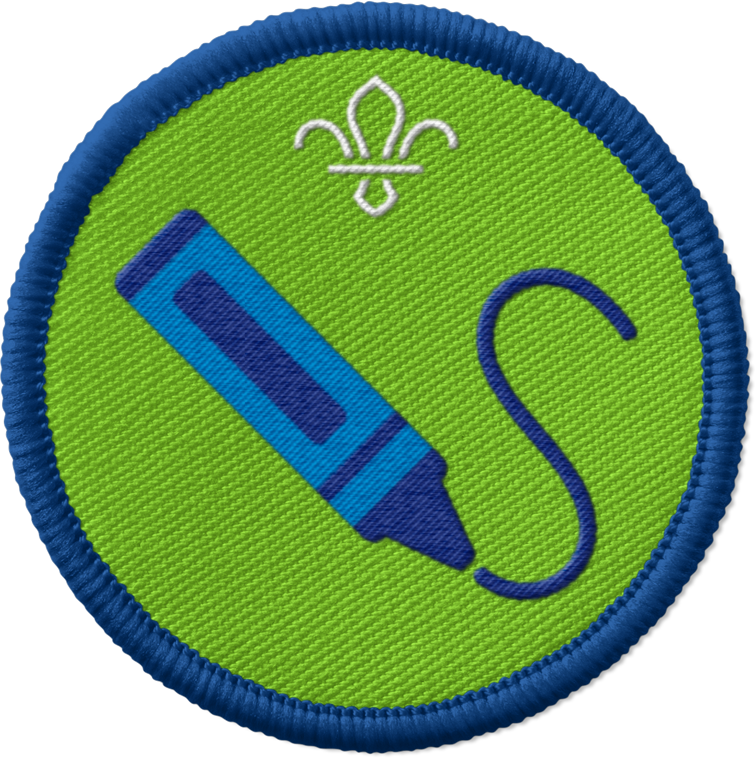
Perfect postage stamps
You’ll need
- Coloured pens or pencils
- Printed copies of stamp templates (optional)
- A collection of (or pictures of) postage stamps or HM The King (optional)
Before you begin
- Use the safety checklist to help you plan and risk assess your activity. Additional help to carry out your risk assessment, including examples can be found here. Don’t forget to make sure all young people and adults involved in the activity know how to take part safely.
- Make sure you’ll have enough adult helpers. You may need some parents and carers to help if you’re short on helpers
Learn about stamps
- Gather everyone in a circle. Ask if anyone knows what postage stamps are. Has anyone ever seen one? What are they for? What do they look like? Has anyone used one recently?
- Tell everyone that the world’s first adhesive postage stamp was made in the UK and was invented by Sir Rowland Hill. He invented it in 1837 and perfected it until 1840. It was brought out on 6 May 1840. The first ever stamp was called the Penny Black. It changed the postal system forever, as people could pre-pay before they sent something. The stamp was black and Queen Victoria’s face also featured on it. UK stamps usually have an image of the monarch either as the whole stamp or as a silhouette in the corner. On 10 February 1841, the Penny Red replaced the Penny Black stamp. This was because the black stamp didn’t show up any marks made on it – so they thought red would be better! The Penny Red stamp was used until 1879 and around 21 billion were produced. The first and second class system started in 1968. If you want to send something quickly then you should buy a first class stamp, but it's a little more expensive than a second class stamp. First class and second class stamps are still in action today.
- Show the group pictures of some stamps or actual stamps. Ask if anyone can see what they all have in common and what is different about them.
- Explain that the first ever non-royal to appear on a UK stamp was William Shakespeare. William Shakespeare first appeared on a stamp in 1964. There are lots of exciting stamps that are released now, such as the FA Cup final, flowers, birds, cats, UK national parks, Roman Britain, video games, beaches, Winnie the Pooh, Doctor Who, the Olympics, David Bowie, Star Wars, Elton John, Lunar New Year, The Gruffalo, Sherlock Holmes, Coronation Street, Tutankhamen, the band Queen, James Bond, Shaun the Sheep, Marvel and Harry Potter. People who collect stamps are called stamp collectors.
- According to Guinness World Records, the most expensive stamp in the world is the British Guiana 1c magenta. It was sold in New York on 17 June 2014. It sold for $9,480,000 which is £5,588,577.
Design your own stamps
- Ask everyone what they’d put on a stamp to celebrate something and why. They might celebrate a historical figure they admire, a role model, their pet, their favourite sport or something in your local area.
- Show the group the templates and explain that they’re going to design a stamp.
- Give everyone a piece of paper and let them design their stamp. They could use the template or do it freehand. Let everyone be as creative as they want to be!
- Once finished, bring all your images together and find somewhere to display them. You could see if you could put some up in local post offices!
Reflection
This activity was all about stamps. Stamps have been used for a long time to send post across the globe. Are all stamps the same? Do you think they’ll look different in other countries? Has anyone seen a stamp from a different country?
What do you think will happen to stamps in the future? How do you feel when you get post in the mail? Does anyone collect stamps, or have you seen a stamp with a fun design that you’ve kept?
Safety
All activities must be safely managed. You must complete a thorough risk assessment and take appropriate steps to reduce risk. Use the safety checklist to help you plan and risk assess your activity. Always get approval for the activity, and have suitable supervision and an InTouch process.
You could provide different craft materials, such as stickers or collaging materials, so the stamps can be created using different media.
If anyone needs help or struggles with fine motor skills, give them the opportunity to work in pairs, with a young leader or an adult volunteer. Alternatively, swap out the items for something easier to handle, such as wide felt tips or egg-shaped crayons.
You could have some examples the young people can copy. You could also provide ready drawn stamps that could be coloured in. Offer to help with drawing, cutting, or crafting if anyone needs it.
You could have the craft materials ready to use. For example, buttons could be self-adhesives, or tissue paper could already be ripped into small pieces for anyone who may struggle to rip the paper.
Make sure to have larger printed copies of stamps if anyone may struggle to see them.
All Scout activities should be inclusive and accessible.


